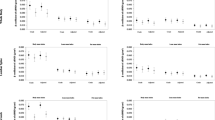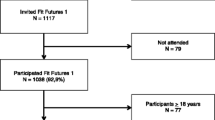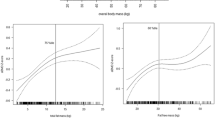Abstract
Summary
While the association of lean mass (LM) with bone mass is well understood, the association of fat mass (FM) with bone mass is controversial. Our results support that adolescents with higher levels of adiposity have greater bone mass, but this association is fully explained by their higher levels of LM.
Introduction
We aimed (1) to study the independent association of FM and LM with bone mass and (2) to study the differences in bone mass by weight status in adolescents, after controlling for relevant confounders, such as physical activity (PA), calcium intake, and LM.
Methods
Participants were 330 adolescents (167 boys, 12.5–17.5 years) from the HELENA study. The relationships of FM (DXA, n = 330; BodPod, n = 282) and LM (DXA, n = 330) with different bone variables (whole body, total hip, lumbar spine, and femoral neck) were analyzed by linear regression, and differences between weight status were analyzed by ANCOVA.
Results
Fat mass (DXA) was positively associated with bone variables in both sexes, after adjustment for height, calcium intake, and sexual maturation. Additional adjustment by PA slightly increases the associations. However, adjustment for LM inverted these associations. Similar results were obtained using BodPod instead of DXA for assessing FM. Overweight/obese adolescents had higher BMC than their non-overweight peers in most of regions studied. Additional adjustment for PA slightly increased the differences between weight status groups, while adjusting for LM inverted the associations. LM was strong and positively associated with all bone variables in both sexes. Additional adjustment for PA or FM did not change the results.
Conclusions
Adolescents with higher levels of adiposity have greater bone mass, but this association is explained by their higher levels of LM.


Similar content being viewed by others
References
Ferrari SL (2005) Osteoporosis: a complex disorder of aging with multiple genetic and environmental determinants. World Rev Nutr Diet 95:35–51
Rizzoli R, Bianchi ML, Garabedian M, McKay HA, Moreno LA (2010) Maximizing bone mineral mass gain during growth for the prevention of fractures in the adolescents and the elderly. Bone 46:294–305
Cummings SR, Black DM, Nevitt MC, Browner W, Cauley J, Ensrud K, Genant HK, Palermo L, Scott J, Vogt TM (1993) Bone density at various sites for prediction of hip fractures. The Study of Osteoporotic Fractures Research Group. Lancet 341:72–75
Marshall D, Johnell O, Wedel H (1996) Meta-analysis of how well measures of bone mineral density predict occurrence of osteoporotic fractures. BMJ 312:1254–1259
Branca F, Valtuena S (2001) Calcium, physical activity and bone health—building bones for a stronger future. Public Health Nutr 4:117–123
Vicente-Rodriguez G, Ezquerra J, Mesana MI, Fernandez-Alvira JM, Rey-Lopez JP, Casajus JA, Moreno LA (2008) Independent and combined effect of nutrition and exercise on bone mass development. J Bone Miner Metab 26:416–424
Vicente-Rodriguez G, Ara I, Perez-Gomez J, Dorado C, Calbet JA (2005) Muscular development and physical activity as major determinants of femoral bone mass acquisition during growth. Br J Sports Med 39:611–616
Courteix D, Lespessailles E, Loiseau-Peres S, Obert P, Ferry B, Benhamou CL (1998) Lean tissue mass is a better predictor of bone mineral content and density than body weight in prepubertal girls. Rev Rhum Engl Ed 65:328–336
Rauch F, Bailey DA, Baxter-Jones A, Mirwald R, Faulkner R (2004) The ‘muscle-bone unit’ during the pubertal growth spurt. Bone 34:771–775
Schoenau E, Frost HM (2002) The “muscle-bone unit” in children and adolescents. Calcif Tissue Int 70:405–407
Vicente-Rodriguez G, Ara I, Perez-Gomez J, Serrano-Sanchez JA, Dorado C, Calbet JA (2004) High femoral bone mineral density accretion in prepubertal soccer players. Med Sci Sports Exerc 36:1789–1795
Daly RM, Saxon L, Turner CH, Robling AG, Bass SL (2004) The relationship between muscle size and bone geometry during growth and in response to exercise. Bone 34:281–287
El Hage RP, Courteix D, Benhamou CL, Jacob C, Jaffre C (2009) Relative importance of lean and fat mass on bone mineral density in a group of adolescent girls and boys. Eur J Appl Physiol 105:759–764
Pietrobelli A, Faith MS, Wang J, Brambilla P, Chiumello G, Heymsfield SB (2002) Association of lean tissue and fat mass with bone mineral content in children and adolescents. Obes Res 10:56–60
Sayers A, Tobias JH (2010) Fat mass exerts a greater effect on cortical bone mass in girls than boys. J Clin Endocrinol Metab 95:699–706
Young D, Hopper JL, Macinnis RJ, Nowson CA, Hoang NH, Wark JD (2001) Changes in body composition as determinants of longitudinal changes in bone mineral measures in 8 to 26-year-old female twins. Osteoporos Int 12:506–515
El Hage R, Moussa E, El Hage Z, Theunynck D, Jacob C (2010) Influence of age and morphological characteristics on whole body, lumbar spine, femoral neck and 1/3 radius bone mineral apparent density in a group of Lebanese adolescent boys. J Bone Miner Metab. doi:10.1007/s00774-010-0246-4
Martinez-Gomez D, Ruiz JR, Ortega FB et al (2010) Recommended levels of physical activity to avoid an excess of body fat in European adolescents: the HELENA Study. Am J Prev Med 39:203–211
Reid IR (2002) Relationships among body mass, its components, and bone. Bone 31:547–555
Cobayashi F, Lopes LA, Taddei JA (2005) Bone mineral density in overweight and obese adolescents. J Pediatr (Rio J) 81:337–342
Ellis KJ, Shypailo RJ, Wong WW, Abrams SA (2003) Bone mineral mass in overweight and obese children: diminished or enhanced? Acta Diabetol 40(Suppl 1):S274–S277
Leonard MB, Shults J, Wilson BA, Tershakovec AM, Zemel BS (2004) Obesity during childhood and adolescence augments bone mass and bone dimensions. Am J Clin Nutr 80:514–523
Goulding A, Taylor RW, Jones IE, Manning PJ, Williams SM (2002) Spinal overload: a concern for obese children and adolescents? Osteoporos Int 13:835–840
Rocher E, Chappard C, Jaffre C, Benhamou CL, Courteix D (2008) Bone mineral density in prepubertal obese and control children: relation to body weight, lean mass, and fat mass. J Bone Miner Metab 26:73–78
Gracia-Marco L, Tomas C, Vicente-Rodriguez G, Jimenez-Pavon D, Rey-Lopez JP, Ortega FB, Lanza-Saiz R, Moreno LA (2010) Extra-curricular participation in sports and socio-demographic factors in Spanish adolescents: the AVENA study. J Sports Sci 28:1383–1389
Campion JM, Maricic MJ (2003) Osteoporosis in men. Am Fam Physician 67:1521–1526
Moreno LA, Gonzalez-Gross M, Kersting M et al (2008) Assessing, understanding and modifying nutritional status, eating habits and physical activity in European adolescents: the HELENA (Healthy Lifestyle in Europe by Nutrition in Adolescence) Study. Public Health Nutr 11:288–299
Moreno LA, De Henauw S, Gonzalez-Gross M et al (2008) Design and implementation of the Healthy Lifestyle in Europe by Nutrition in Adolescence Cross-Sectional Study. Int J Obes (Lond) 32(Suppl 5):S4–S11
Beghin L, Castera M, Manios Y et al (2008) Quality assurance of ethical issues and regulatory aspects relating to good clinical practices in the HELENA Cross-Sectional Study. Int J Obes (Lond) 32(Suppl 5):S12–S18
Nagy E, Vicente-Rodriguez G, Manios Y et al (2008) Harmonization process and reliability assessment of anthropometric measurements in a multicenter study in adolescents. Int J Obes (Lond) 32(Suppl 5):S58–S65
Cole TJ, Bellizzi MC, Flegal KM, Dietz WH (2000) Establishing a standard definition for child overweight and obesity worldwide: international survey. BMJ 320:1240–1243
Cole TJ, Flegal KM, Nicholls D, Jackson AA (2007) Body mass index cut offs to define thinness in children and adolescents: international survey. BMJ 335:194
Tanner JM, Whitehouse RH (1976) Clinical longitudinal standards for height, weight, height velocity, weight velocity, and stages of puberty. Arch Dis Child 51:170–179
Vicente-Rodriguez G, Jimenez-Ramirez J, Ara I, Serrano-Sanchez JA, Dorado C, Calbet JA (2003) Enhanced bone mass and physical fitness in prepubescent footballers. Bone 33:853–859
Gracia-Marco L, Vicente-Rodriguez G, Casajus JA, Molnar D, Castillo MJ, Moreno LA (2011) Effect of fitness and physical activity on bone mass in adolescents: the HELENA Study. Eur J Appl Physiol (in press)
McCrory MA, Gomez TD, Bernauer EM, Mole PA (1995) Evaluation of a new air displacement plethysmograph for measuring human body composition. Med Sci Sports Exerc 27:1686–1691
Moliner-Urdiales D, Ruiz JR, Ortega FB, Rey-Lopez JP, Vicente-Rodriguez G, Espana-Romero V, Munguia-Izquierdo D, Castillo MJ, Sjostrom M, Moreno LA (2009) Association of objectively assessed physical activity with total and central body fat in Spanish adolescents: the HELENA Study. Int J Obes (Lond) 33:1126–1135
Siri WE (1961) Body composition from fluid spaces and density: analysis of methods. In: Brozek J, Henschel A (eds) Techniques for measuring body composition. National Academy of Sciences, National Research Council, Washington, pp 223–234
Siri WE (1961) Body composition from fluid spaces and density: analysis of methods. Nutrition 9:480–491, discussion 480, 492
Vereecken CA, Covents M, Sichert-Hellert W et al (2008) Development and evaluation of a self-administered computerized 24-h dietary recall method for adolescents in Europe. Int J Obes (Lond) 32(Suppl 5):S26–S34
Farrán A, Zamora R, Cervera P (2004) Tablas de Composición de Alimentos del Centre d'Ensenyament Superior de Nutrició i Dietètica (CESNID). Barcelona
Weiler HA, Janzen L, Green K, Grabowski J, Seshia MM, Yuen KC (2000) Percent body fat and bone mass in healthy Canadian females 10 to 19 years of age. Bone 27:203–207
Janicka A, Wren TA, Sanchez MM, Dorey F, Kim PS, Mittelman SD, Gilsanz V (2007) Fat mass is not beneficial to bone in adolescents and young adults. J Clin Endocrinol Metab 92:143–147
Acknowledgments
The HELENA study takes place with the financial support of the European Community Sixth RTD Framework Programme (Contract FOOD-CT-2005-007034). The writing group takes sole responsibility for the content of this article. This study was also supported by a grant from the Spanish Ministry of Health: Maternal, Child Health and Development Network (number RD08/0072), grants from the Spanish Ministry of Science and Innovation (EX-2008-0641; JCI-2010-07055), and the Swedish Heart-Lung Foundation (20090635). Finally, this study was also supported (LGM, GVR, LAM) by a grant from Mutua de la Agrupación de Propietarios de Fincas Rústicas de España (Fundación MAPFRE), Spain. We gratefully acknowledge all participating adolescents and their parents for their collaboration.
Conflicts of interest
None.
Author information
Authors and Affiliations
Corresponding author
Appendix
Appendix
http://www.helenastudy.com/research.php
Research groups from Zaragoza and Granada were involved in the preparation of this paper.
Rights and permissions
About this article
Cite this article
Gracia-Marco, L., Ortega, F.B., Jiménez-Pavón, D. et al. Adiposity and bone health in Spanish adolescents. The HELENA study. Osteoporos Int 23, 937–947 (2012). https://doi.org/10.1007/s00198-011-1649-3
Received:
Accepted:
Published:
Issue Date:
DOI: https://doi.org/10.1007/s00198-011-1649-3




